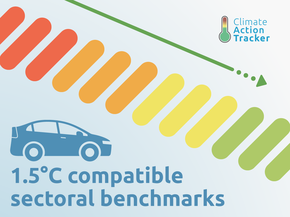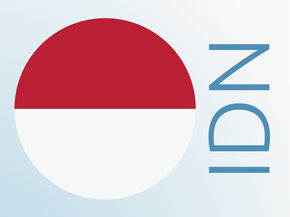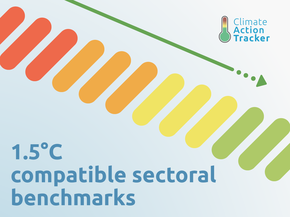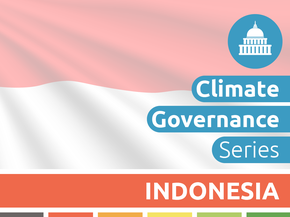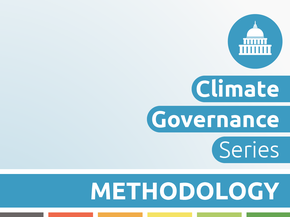Country summary
Overview
NDC Update: In July 2021, Indonesia submitted an updated NDC. Our analysis of this submission is here.
Indonesia’s emissions remain on an upwards trajectory. The effect of COVID-19 is prominent in the short term but it appears Indonesia looks set to miss the opportunity to lock in deep emissions reductions as it recovers from the pandemic. The government’s National Recovery Programme does not support low-carbon options; instead, it bails out coal-heavy electric utilities. The CAT continues to rate Indonesia “Highly Insufficient.”
The CAT expects Indonesia’s emissions to decrease 2 to 6% in 2020 compared to 2019. The decline observed in the first quarter of 2020 has mostly been driven by a reduction in household consumption and a slowdown in investments. Indonesia has also seen a reduction in both coal and palm oil exports – two major economic sectors. The CAT’s Indonesia’s emissions projections are 5 - 12% lower in 2030 compared to our previous estimate in December 2019, exclusively due to the economic downturn in 2020 as a result of the pandemic and its impact on emissions. There is a lot of uncertainty, as the full effect of the COVID-19 pandemic or the recovery measures on economic development are still unclear. However, Indonesia’s initial recovery do not indicate any focus on green measures.
The government has earmarked approximately IDR 720 trillion (USD 48 billion) to fund the national recovery from COVID-19. The National Economic Recovery (PEN) presents an opportunity to increase investment in low-carbon development, but the current plans make no attempt to set the country on a low-emissions pathway – and recent developments suggest it’s doing the opposite.
Additional fossil fuel support is underway with the government committing a large proportion of its recovery plan to the state utility company (PLN), without assigning conditions to such bailout. Indonesia plans to install about 27 GW of coal-fired electricity by 2028: it is one of only five countries in the world that started new coal plant construction in 2020 and has the fourth largest coal pipeline with more than 30 GW of coal fired power generation in development (6% of the global share).
Shifting investments from the coal expansion the government plans for the next five years towards renewable, zero-carbon solutions is crucial in getting Indonesia onto a sustainable development pathway compatible with the Paris Agreement. As of August 2020, PLN’s power sector plan for the next ten years had not yet been published, which still gives the government an opportunity to adjust its plans and change course from the construction of new coal-fired power plants, and instead plan for a just transition to phase out coal by 2040.
Policies to support low-carbon development in Indonesia need adjustments to realise their full mitigation potential. Some design elements of policies supporting the uptake of renewables and the general investment environment still favour large-scale, fossil-fuelled power and prevent a swift and large-scale expansion of renewables.
In 2019, the government implemented supportive policies that aim to not only increase the number of electric vehicles (EVs) and charging stations but also to develop the country’s local EV manufacturing industry. This is commendable, but to harness the benefits of EVs for climate, the support for EVs needs to be clearly defined and coupled with the decarbonisation of the electricity sector.
Indonesia is very likely to overachieve its Paris Agreement targets, excluding the forestry sector, with currently implemented policies. However, Indonesia’s climate commitment is not in line with any interpretation of a “fair” approach to the former 2°C goal, let alone the Paris Agreement’s 1.5°C limit. The CAT continues to rate the Indonesian NDC target (excluding forestry) as “Highly insufficient.”


According to our analysis, Indonesia will meet its proposed targets with currently implemented policies. However, while Indonesia’s relative reductions below BAU anchored in its NDC may sound ambitious, a closer look reveals a different picture for three reasons:
- First, Indonesia aims to meet a large share of its commitments through emission reductions in the forestry sector. This means that other sectors will see substantially lower relative reductions below BAU.
- Second, the BAU used in the NDC projects an inflated emissions increase which is substantially above current policies projections. In fact, Indonesia will likely achieve its targets (excl. forestry) without any additional efforts while still doubling today’s emissions.
- Third, Indonesia’s National Energy Policy (NEP) and medium-term development plan present more ambitious targets than the NDC. If Indonesia were to meet these targets, it would overachieve both its unconditional and conditional NDC targets to an even greater extent than already envisaged.
In 2019, Indonesia published its next five-year development plan, covering 2020-2024, which foresees an increase in renewable power capacity over three times higher than the electricity supply plan earlier in the year (Ministry of National Development Planning (Bappenas), 2019). In 2019 the Ministry of National Development Planning (BAPPENAS) also released its low-carbon development plan, containing three long-term (2045) emission pathways. Only one of these long-term scenarios would bend GHG emissions downwards by 2045, halving emissions (including forestry) compared to today’s levels. While the CAT does not include the forestry sector in its analysis, an increase in total emissions up to 2050 is not in line with any “fair” interpretation of a 1.5°C Paris Agreement compatible development pathway.
Indonesia currently has 33 GW of operating coal-fired power generation, and is still planning to add another 31 GW. This is the fourth largest coal pipeline in the world (after China, India, and Turkey), and 6% of the global share (Shearer, 2020).
At the end of 2019, the total renewable installed capacity reached 10.2 GW, which is below the government target of 15.5 GW for 2018 (Suharsono et al., 2019). For power generation, hydropower remains the biggest source of renewable electricity, reaching a total installed capacity of approximately 5.4 GW at the end of 2019, followed by geothermal with 2.1 GW and bioenergy with 1.9 GW. Solar and wind reached together 0.3 GW, representing a doubling of installed capacity from the previous year (IESR, 2019).
In March 2019, the first line of Jakarta’s Mass Rapid Transit system opened, allowing a shift from private to public modes of transportation in the city. The government also issued a regulation aiming to boost domestic electricity vehicle (EV) manufacturing and increase EV shares, but details still need to be further defined to harness the EV mitigation potential.
Indonesia’s biofuel mandate is one of the most ambitious in the world. Indonesia has plans to increase the national energy consumption mandate to 40% and produce biodiesel solely from palm oil. However, while Indonesia’s biofuels targets are ambitious, they are controversial due to concerns with increased palm oil production: plantations for biofuel production are specifically exempt from a key sustainability certification.
In 2011, the government had issued a palm oil moratorium on new palm oil plantations in an area covering 66 Mha. The president has since renewed the moratorium and issued an instruction making it permanent (Diela, 2019). However, there is uncertainty regarding the efficacy of the moratorium. While the policy is considered a good instrument to limit future deforestation in Indonesia, some research shows that deforestation has increased since its implementation due to a lack of proper enforcement.
The issue of forest clearance for palm oil is a major problem in Indonesia, which alone contributed to 7% of total global tree cover loss between 2001 and 2018. The LULUCF sector contributes a large share of emissions reaching around 1 GtCO2e/year – due to an unusually high occurrence of peat fires, LULUCF emissions in Indonesia reached 1.6 GtCO2 in 2015. To put that into context, global emissions from LULUCF were about 4.1 GtCO2e in 2016.
In 2019, the Indonesian fires were again a special source of concern: in the third week of September 2019 alone, there were more than 70,000 fire alerts across the country, causing a state of emergency in at least six Indonesian provinces and sparking complaints from neighbouring countries that were affected by the toxic haze (Global Forest Watch, 2019).
Further analysis
Country-related publications
Stay informed
Subscribe to our newsletter

